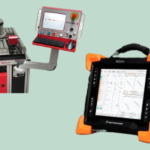Are you confident in the safety of every engine part, brake system, and suspension component in your vehicle? How do automotive manufacturers guarantee flawless quality at high production speeds? What role does Eddy Current testing services play in ensuring safer roads through smarter car manufacturing? These questions point directly to a crucial technology reshaping automotive safety and production efficiency today. In this briefing, we’ll explore how Eddy Current Testing (ECT) is transforming the automotive sector, making vehicles safer and production smarter.
Why is Eddy Current Testing the Unsung Hero in Automotive Safety?
When you think about vehicle safety, do you consider the hidden defects inside critical parts? Traditional visual inspections or mechanical tests often miss micro-cracks and corrosion beneath the surface—flaws that can lead to premature part failure. That’s where Eddy Current Testing excels. ECT is a powerful non-destructive testing (NDT) method that detects surface and sub-surface flaws quickly and accurately without damaging the components.
- Detects both surface and sub-surface defects such as cracks, corrosion, and fatigue in engine blocks, brake discs, and suspension parts
- Speeds up inspection without compromising accuracy, critical for high-volume automotive production
- Provides detailed defect characterization, helping engineers predict part lifespan and improve design
As per SAE International (2024), automotive manufacturers using Eddy Current testing services report up to a 30% reduction in recall rates due to early detection of material defects—proof that this technology directly impacts vehicle reliability and road safety.
Automated ECT Systems: Revolutionizing Mass Production
How do car manufacturers maintain impeccable quality without slowing down their fast-paced assembly lines? The answer lies in the integration of automated Eddy Current testing systems directly into production workflows.
- Automated ECT scanners inspect parts in seconds, catching defects immediately during assembly
- Real-time data analytics enable instant decision-making, reducing scrap and rework rates
- Seamless integration with robotic assembly lines minimizes human error and maintains consistent inspection standards across batches
By automating ECT, manufacturers ensure a continuous flow of reliable quality control without bottlenecks, increasing throughput and lowering costs. This is especially vital in sectors like electric vehicle (EV) manufacturing, where new components demand rigorous testing to meet evolving standards, a precise arena that Eddy Current testing product can assist in.
Common Myths Busted: Understanding Eddy Current Testing
Despite its benefits, some misconceptions about Eddy Current Testing still persist in the industry. Let’s set the record straight:
Myth #1: Eddy Current Testing is only effective for surface defects
Reality: ECT can detect flaws just beneath the surface, making it ideal for complex automotive components like brake rotors and engine cylinders that have multi-layered structures.
Myth #2: Eddy Current Testing slows down production
Reality: Modern automated ECT equipment inspects parts in fractions of a second, enabling manufacturers to maintain or even increase production speeds without sacrificing quality.
Understanding the true capabilities of Eddy Current Testing can help you better leverage this technology to improve your manufacturing and maintenance strategies.
The Impact of Eddy Current Testing on Automotive Quality
The automotive industry’s dependence on Eddy Current testing services is rapidly expanding. According to MarketsandMarkets (2024), the global Eddy Current Testing market in automotive manufacturing is projected to grow by 12.5% annually through 2027, driven by rising demand for non-destructive testing in quality assurance and safety compliance.
| Application Area | Benefits of ECT | Common Defects Detected |
| Engine components | Detects cracks, corrosion, and fatigue | Micro-cracks, corrosion, pitting |
| Brake systems | Ensures rotor integrity and brake pad condition | Cracks, wear, surface flaws |
| Suspension parts | Identifies fatigue and structural weaknesses | Stress fractures, corrosion |
How Can You Maximize ROI with Eddy Current Testing?
Are you maximizing the full potential of Eddy Current testing services to go beyond simple defect detection? The next frontier is combining ECT with predictive maintenance analytics. By monitoring defect progression over time, you can forecast part failures and schedule maintenance proactively—reducing downtime and costly repairs.
- Can your current ECT system integrate with IoT platforms for continuous condition monitoring?
- Are you using data from inspections to refine your supplier quality programs?
- How do you ensure traceability and compliance while scaling inspection throughput?
Addressing these strategic questions can transform your NDT approach from reactive to predictive, delivering measurable ROI.
Why Choose Specialized Eddy Current Testing Services?
With many non-destructive testing methods available, why rely on Eddy Current testing services? The answer lies in the unique advantages ECT offers in precision, speed, and adaptability:
- Non-contact and fast, minimizing part handling and inspection time
- Sensitive to very small cracks and material inconsistencies, critical for safety-critical components
- Easily automated and adaptable for a range of automotive parts and materials, including metals and composites
Choosing a service provider that combines expert educational resources, state-of-the-art equipment, and marketplace solutions ensures you get the right tools and knowledge for your unique needs.
Final Thoughts: Driving Forward with Confidence
Every vehicle on the road depends on countless components working perfectly together. Eddy Current Testing acts as a vital safety checkpoint, revealing hidden flaws before parts reach assembly and eventually the driver. For automotive manufacturers and quality control teams, investing in Eddy Current testing services is essential for producing smarter cars and ensuring safer roads.
Enhance your quality assurance programs and lead the way in automotive safety innovation.

